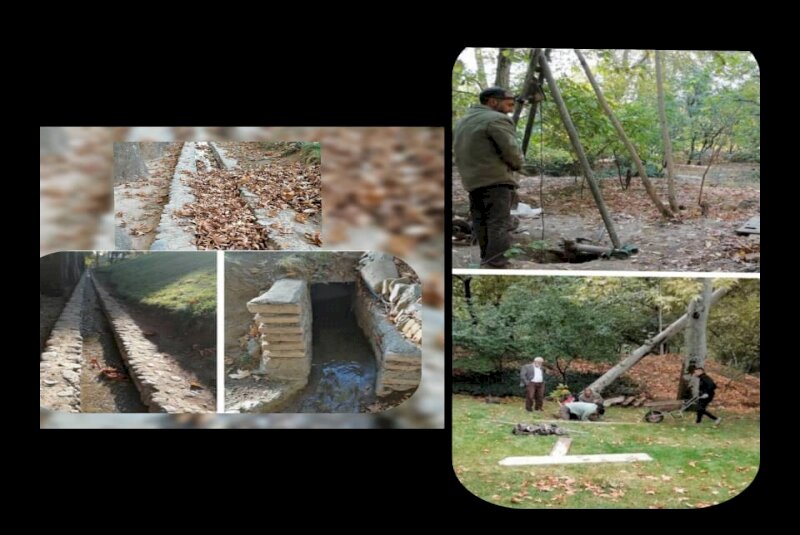Qanats of Sa’dabad historical complex revived

TEHRAN – Four old qanats in the Sa’dabad Cultural-Historical Complex in northern Tehran that had dried up over time, have recently been revived.
The project, which was completed over a period of more than three months, involved cleaning, dredging, removing blocked parts, strengthening the body and flow path, repairing damaged parts, and securing qanats, Kia Parsa, the director of the Sa'dabad Cultural-Historical Complex announced on Wednesday.
The qanats were built in the late Qajar era (1789–1925) and early Pahlavi period (1925-1979) to irrigate the garden and yard of the complex, he added.
For thousands of years, qanat systems have supplied water to agricultural and permanent settlements in arid regions of Iran, tapping alluvial aquifers at the heads of valleys and conducting the water along underground tunnels by gravity, often over many kilometers.
According to UNESCO, The qanats provide exceptional testimony to cultural traditions and civilizations in desert areas with an arid climate.
The qanat system relies on snow-fed streams, which flow down the foothills of surrounding mountains channeling through sloping aqueducts, often over far distances to discharge into the city’s underground reservoirs or ab-anbars. Such constructions are still in practice, many of which were made from the 13th century onwards.
Sprawled on about 110 hectares of a mountainside parkland in northern Tehran, the Sadabad Cultural-Historical Complex is used to be a royal summer residence during the Qajar and Pahlavi eras.
The complex was initially established and inhabited by some Qajar monarchs in the 19th century. It has undergone further expansions from the 1920s until the 1979 Islamic Revolution.
The site embraces a variety of buildings, some of which turned to be house museums showcasing a wide range of royal families’ memorabilia including lavishly-made furniture, dishware, automobiles, carpets, and miniature paintings.
ABU/MG
